| Botanical Name |
|
| Family |
Ebenaceae - The ebony family. |
| Pronunciation |
YOO-klee-uh un-dew-LAY-tuh |
| Common Name(s) |
|
| Plant Group |
- Tree A woody, self-supporting perennial plant usually with a single main stem and generally growing more than 6 meters tall.
|
| Plant Size |
- Small
| Tree | 4m to 8m |
| Shrub | 50cm to 75cm |
| Perennial/ground cover | 10cm to 20cm |
| Bulb | 20cm to 30cm |
| Succulent | 10cm to 20cm |
- Very Small
| Tree | 3m to 4m |
| Shrub | 25cm to 50cm |
| Perennial/ground cover | Up to 10cm |
| Bulb | 10cm to 20cm |
| Succulent | Up to 5cm |
|
| Position |
- Partial Shade The area is in shade for part of the day and in full sun for part of the day.
- Sun The area is in full sun for all or most of the day, all year round.
|
| General Information |
- Drought Tolerance: High The plant is well adapted to arid conditions; it can survive long periods of drought and high temperatures without extra water.
- Evergreen Plants that have leaves all year round.
- Frost: Hardy The plant can withstand freezing temperatures or frost without artificial protection.
- Roots Non-invasive Safe to plant near pools, paving, walls or buildings.
- Water Wise Plant species originating from low rainfall regions that require less water to survive and thrive than other plant species.
- Wind Tolerant Plants able to withstand the effect of strong winds.
|
| Specific Information |
Euclea undulata is a small, dense tree or twiggy shrub with stiff, leathery leaves that may be dark-, yellowish- or blue-green. The leaves are quite small (from 2 - 7 cm) and range from flat to very wavy. In the wild it sometimes forms dense thickets. The small, unpleasant tasting fruits are edible and turn black when ripe. They are much loved by birds. I have also baboons sitting in the bushes enjoying the fruit, so possibly monkeys and other small creatures eat them as well.
This species has not been much used in gardens but has great potential for landscaping, being adaptable to a wide variety of climates and growing conditions, as well as having a naturally rounded shape that does not need much in the way of care. If pruned while young it can be shaped into a small tree.
|
| Ad Break |
|
| Flowers |
| Description |
very small with 5 - 7 flowers on spikes of 2 cm long
|
| Season |
- Summer to Autumn Plants will seldom bloom for the entire season as given in the list, but should flower during a period within these parameters.
|
| Colour |
|
| Growth Rate |
- Moderate Specifying growth rate can be very misleading as there is considerable variation of growth rate depending on type and species of plant, available water, supplementary feeding, mulching and general care, as well as the plants suitability and adaptability to the garden environment.
|
| Plant Uses |
- Attracts bees, butterflies or other insects This plant attracts insects which can be food for birds or other creatures in your garden.
- Attracts Birds This plant will attract birds.
- Border A strip of ground, at the edge of a driveway or path in which ornamental plants or shrubs are planted.
- Boundary A plant useful for planting around the edges of the property to form a green or colourful backdrop, an impenetrable hedge, to hide walls or create privacy.
- Filler Either a fast growing tree or shrub used temporarily to fill in an area while the permanent plants grow to a desired size, or a plant used to fill gaps in borders or beds.
- Hedge Suitable trees or shrubs planted relatively close together so that the branches intertwine to create a barrier. This can be formal – the plants are regularly trimmed to produce a neat shape, or informal – the plants are left to themselves to create a natural hedgerow.
- Provides light / dappled shade A tree with an open to sparse canopy, through which varying degrees of sunlight can penetrate.
- Screen A tall hedge of suitable plants planted closely together and used as a windbreak, to block a bad view, to separate parts of the garden or as a backdrop.
- Suitable for bonsai A shrub or tree that lends itself to being dwarfed.
- Suitable for coastal gardens Plants adapted to dry, sandy soil, forceful wind, limited rainfall and intense sunlight.
- Suitable for smaller gardens Such plants do not have invasive root systems, remain small or controllable and can often be grown in containers.
- Wild Garden An indigenous garden planted for the benefit of wildlife and birds. Provides food, water, a variety of mini-biomes and no poisonous chemicals are used.
- Windbreak Trees planted in a row to form protection from prevailing winds by breaking the force of the wind, thereby reducing wind damage.
|
| Distribution and Habitat |
in all provinces of South Africa, as well as Swaziland, Namibia, Botswana, Zimbabwe and further north, on rocky slopes, in open woodland, along watercourses and on termite mounds
|
| Planting Suggestions |
|
| Lorraine's Garden Notes |
I am particularly fond of this plant. In the Eastern Cape I have only come across plants with very curly leaves and for my purposes, this is where the attraction of this species lies. The growth of my specimen has been slow, not having been fertilised or even watered during dry periods. I am confident that given some attention this species will grow much faster.
|
| Medicinal Uses |
The berries are edible but not very tasty. The wood is hard, heavy and durable - useful for fence posts and small items. The bark is used for headaches and an infusion of the roots is used as medicine for heart disease and toothache. The powdered root forms a drastic purgative.
|
| Ad Break |
|


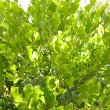
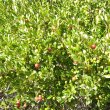
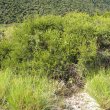
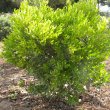
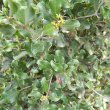


Discuss this plant
Share knowledge, ask a question or give an experience.